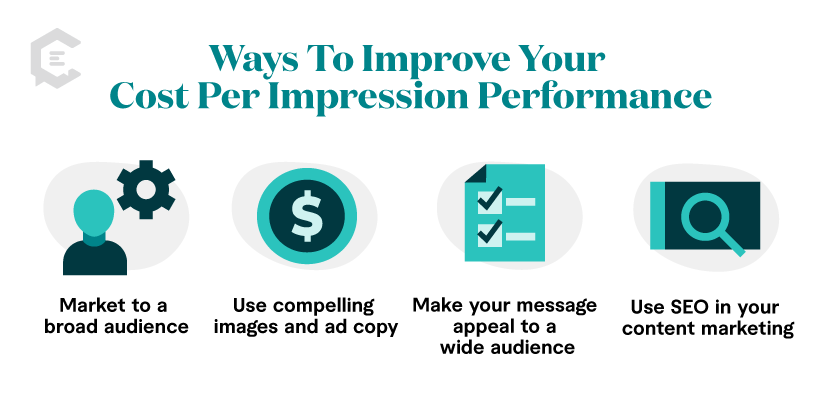What is cost per impression? Cost per impression (CPI) is the expense an organization incurs every time its ad is displayed to a potential customer. Measuring cost per impression helps marketers decide if a given ad campaign is reaching a large enough audience to justify the expense.
When you’re investing money in an ad campaign to market your business, you need to know whether or not your investment will pay off. This is why advertisers measure the cost of displaying an ad to a potential buyer, the cost of getting a potential buyer to reach out as a new lead, and the cost of getting a lead to buy.
The cost of displaying an ad to a potential buyer is the cost per impression.
Because impressions can easily number in the tens or hundreds of thousands, CPI is often converted to CPM (cost per mille, which is Latin for thousand), meaning cost per thousand impressions.
The Uses of Cost Per Impression
1. Traditional marketing
Cost per impression is most useful in traditional marketing methods like television, radio, magazines, and billboards.
In the days before the internet and Big Data, companies could not track leads by “click” to know exactly how much each lead would cost. Instead, they had to track “impressions.”
Consider television advertising, for example. Advertisers can estimate how many people were watching when a commercial for a laundry detergent was displayed. But they can’t calculate how many of those viewers purchased that detergent because of that ad.
Today, organizations can calculate the cost per lead based on click-through rates. Cost per lead is a more valuable metric than cost per impression because it tracks how many viewers take action on a given ad campaign.
However, many organizations still use traditional marketing methods that can’t track the cost per lead. So they still use the cost per impression.
2. Comparing online ad campaigns to traditional marketing campaigns
Many companies also calculate the cost per impression of their online ads in order to make direct comparisons between their online and offline ad campaigns.
3. Boosting brand awareness
When the goal of your ad is to make more people aware of your brand, as opposed to specifically generating new leads, it makes sense to use cost per impression instead of focusing on cost per lead.
How To Calculate Your CPI
You can calculate your CPI for any ad campaign by dividing the total advertising cost by the number of times it was displayed to potential customers.
For example, if you paid $50 on a social media ad campaign that results in 4,000 views, your CPI is $0.0125 ($50 divided by 4,000).
To calculate, you would multiply the CPI by 1,000. So in this example, the CPM would be $12.50 ($0.0125 times 1,000).
Ways To Improve Your Cost Per Impression Performance
- Market to a broad audience. The more views you get, the less each impression costs.
- Use compelling images and ad copy to convert more of your impressions to leads.
- Make your message appeal to a wide audience. Narrowing your message to a specific niche may be good for your cost per lead, but it will only increase your cost per impression.
- Use SEO in your content marketing to earn free impressions in search engine results.
Examples of Cost Per Impression:
- Boosting Facebook posts: Meta allows businesses to boost posts so they can be seen by a larger audience. Facebook calculates the cost per impression and cost per click for you.
- LinkedIn CPM bidding: LinkedIn allows organizations to bid on ads by CPM as part of its “Maximum Delivery” bidding strategy. LinkedIn will calculate the CPI and cost per click for you.
- Billboard advertising: City planners will have data regarding the number of drivers who will pass a specific billboard location. This is the number of impressions the billboard will get in a given month. Divide the cost of the monthly billboard rent by the impressions to get your cost per impression.
Maximize Your Marketing Impact
Marketing can get expensive, really fast. Especially now, with stakeholders asking their marketing departments to do more with less. One of the best ways you can get the most out of your budget is through cost-effective content outsourcing and fractional talent.
In fact, our marketing team implemented this exact strategy this year to save nearly 38 percent of our marketing operating expenses. Not too bad, right?
When you work with a proven partner like ClearVoice, you get experienced, top-tier talent to produce the high-quality content you need, when you need it. We’re happy to oversee your content creation so you can focus on higher-level tasks.
Talk to a ClearVoice content specialist to discover how we can drive your success without breaking the bank.





